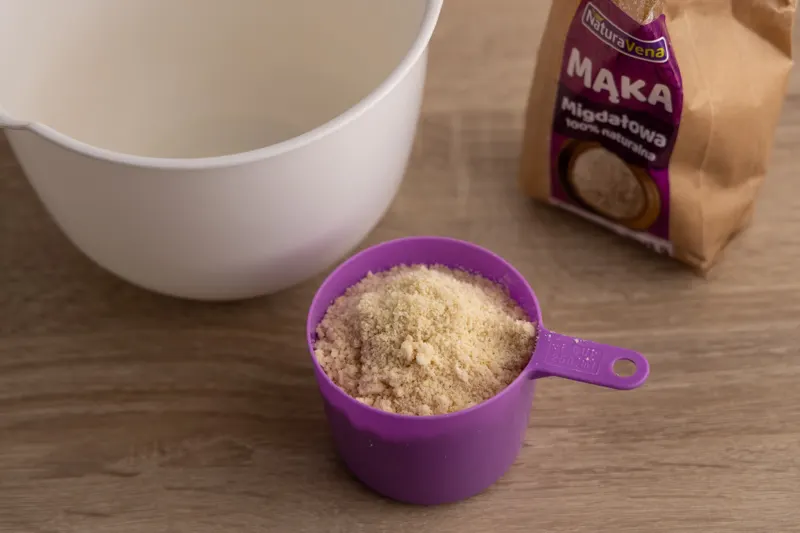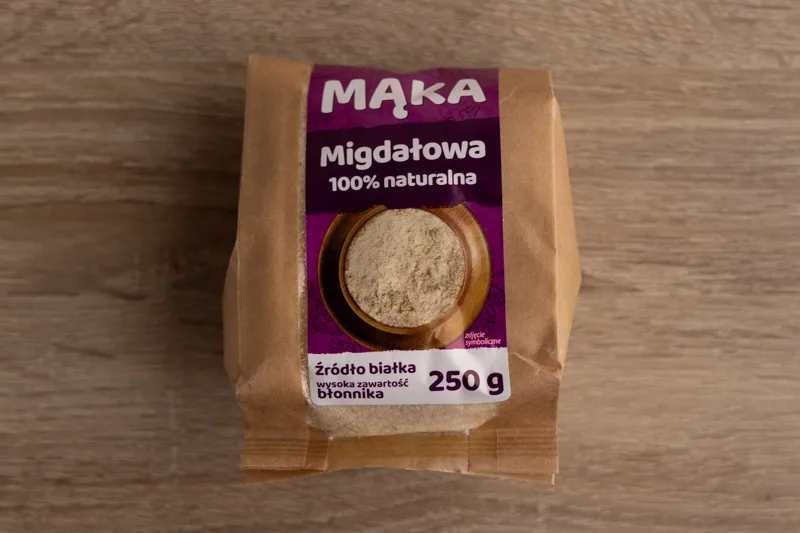If you’re into gluten-free alternatives, almond flour must’ve surely got your attention. So you’ve bought a package or two, but you’re not using it as much as you’d like to. A couple of months pass by, and you’re starting to wonder if that product is still okay to use. Can almond flour go bad?
Or perhaps you’ve bought a package, but aren’t sure what’s the proper way to store it. You’ve probably read that some people recommend refrigerating or even freezing it, while others say it’s alright to keep it at room temperature. So you want to know if almond flour goes bad if not refrigerated. Or if refrigeration or freezing make any difference in terms of shelf life.
In this article, we go through all of those matters. We talk about signs of spoilage, shelf life, and ways of storing this wheat-free flour. And for those of you curious about what’s the difference between almond flour and almond meal, we cover that as well. If that’s what you’re looking for, this piece is for you.

Can Almond Flour Go Bad? How To Tell If It Is Bad?
Almond flour, like all powdered products, can spoil if water or pantry bugs get to the package. When water reaches the powder, there will be wet clumps, or even mold after a few days. If either is present, get rid of the product. Same thing if there are any dead or alive pantry bags. Of course, any dry clumps in the package are perfectly safe, and you can break them down with your fingers or run through a sift.
When it comes to going bad, almond flour is similar to coconut flour and whole-grain flours. The common thing for all of these is that they, unlike white flour, contain oils, which are prone to going rancid.
That means that sooner or later your almond flour will go rancid. That means that besides taking a good look at the powder before using, you should give it a good sniff too. Almond flour should have a nutty smell. If the smell turned sour or rancid, the product is past its prime, and you should throw it out.
(Almonds go rancid and show similar signs of rancidity.)
Having said that, it’s time to talk about how long you can store that flour until it goes rancid.

How Long Does Almond Flour Last? How To Store Almond Flour?
The shelf life of almond flour is a tricky topic to discuss. It’s usually about a year ([DL]), more or less. And obviously, there’s a best-by date on the label, so you can just observe it and get rid of the leftovers once it’s past that date. But you wouldn’t be reading this if that was your plan, would you?
Long story short, the better the storage conditions, the longer it should retain quality. Like other oil-rich flours, almond flour doesn’t like light and heat ([DL]). That means you should keep it in a cool and dark place. As long as the package remains unopened, feel free to store it in a cabinet in the pantry or kitchen. Unless you live in a warm climate or know right away that you need to keep this one for a prolonged period. If that’s the case, refrigerate or freeze the flour right away.

When it comes to an opened package, it’s all about how long you expect to keep it around. If you know you will finish it way before the date on the label, storing the product at room temperature is alright. But if you need to keep it around for longer, possibly even past the date on the label, refrigeration or freezing is in order. When in doubt, refrigerate ([BRM]) the gluten-free flour, so you get a few more months of good quality in case you need it.
If you’d like to keep it for even longer, or the space in your fridge comes at a premium, but you can fit it in your freezer, freeze the flour ([DL]). The powder won’t freeze, but it’s best to let it get back to room temperature before using. That means measuring how much you need and taking it out of the freezer at least an hour before you need it.
When it comes to packaging, the flour should always be sealed after opening. If your package isn’t resealable, transfer the powder in a freezer bag or an airtight container. That will keep any moisture and pantry bugs at bay, plus reduce the exposure to oxygen, which also speeds up rancidification a bit.
So if you wanted to know if you can use almond flour that’s past its date, the answer is sure, provided you handled its storage properly, and it’s not rancid.

What About Homemade Almond Flour? How Long Does It Last?
When it comes to homemade flour, things don’t change much. The storage methods are the same, i.e., a sealed container is needed and the colder the place, the longer the product lasts. When it comes to shelf life, Gemma from Bigger Bolder Baking ([BBB]) says she stores hers for 8 weeks at room temperature, or even longer in the fridge. But I don’t really see a reason why your own nut flour shouldn’t easily last a few months if you take good care of it. It’s not much different from what you get if you buy one.
Last but not least, let’s cover the almond flour and almond meal conundrum.
Is Almond Meal And Almond Flour The Same Thing?
No, it’s not. The best explanation I found comes from Dana at Minimalist Baker ([MB]). In short, almond meal is ground raw almonds, while almond flour is finely ground blanched and peeled almonds. The latter is usually finer in texture (the difference between a flour and a meal is often the fact that the former is finely ground) and lighter in color thanks to peeling.
In some recipes it doesn’t matter that much if it’s the flour or the meal you’re using, but in many it does. Pay close attention to the recipe you’re following, so you won’t accidentally use the wrong one and end up with messed up texture.
In a Nutshell
- almond flour can go rancid because it’s an oil-rich flour
- the colder the storage temperature, the longer it retains quality; if you want to keep it for more than a few months, refrigeration or even freezing is recommended
- make sure it’s always sealed tightly
- almond flour and almond meal aren’t the same thing